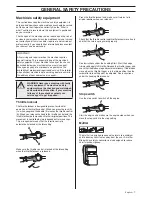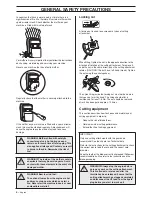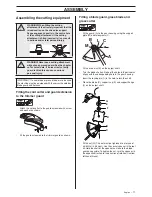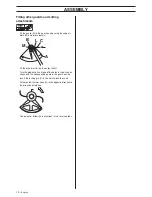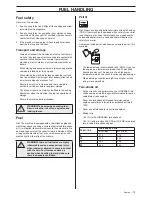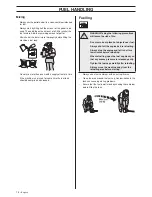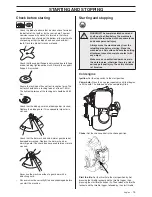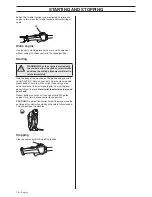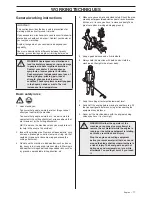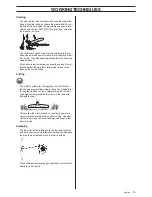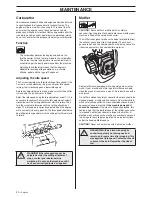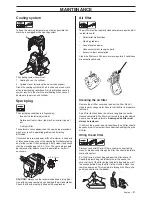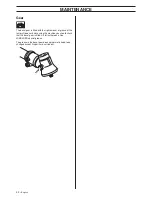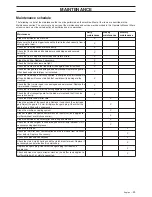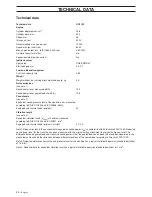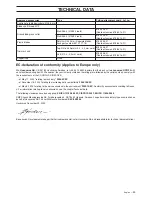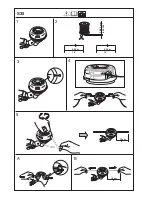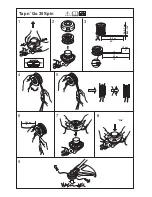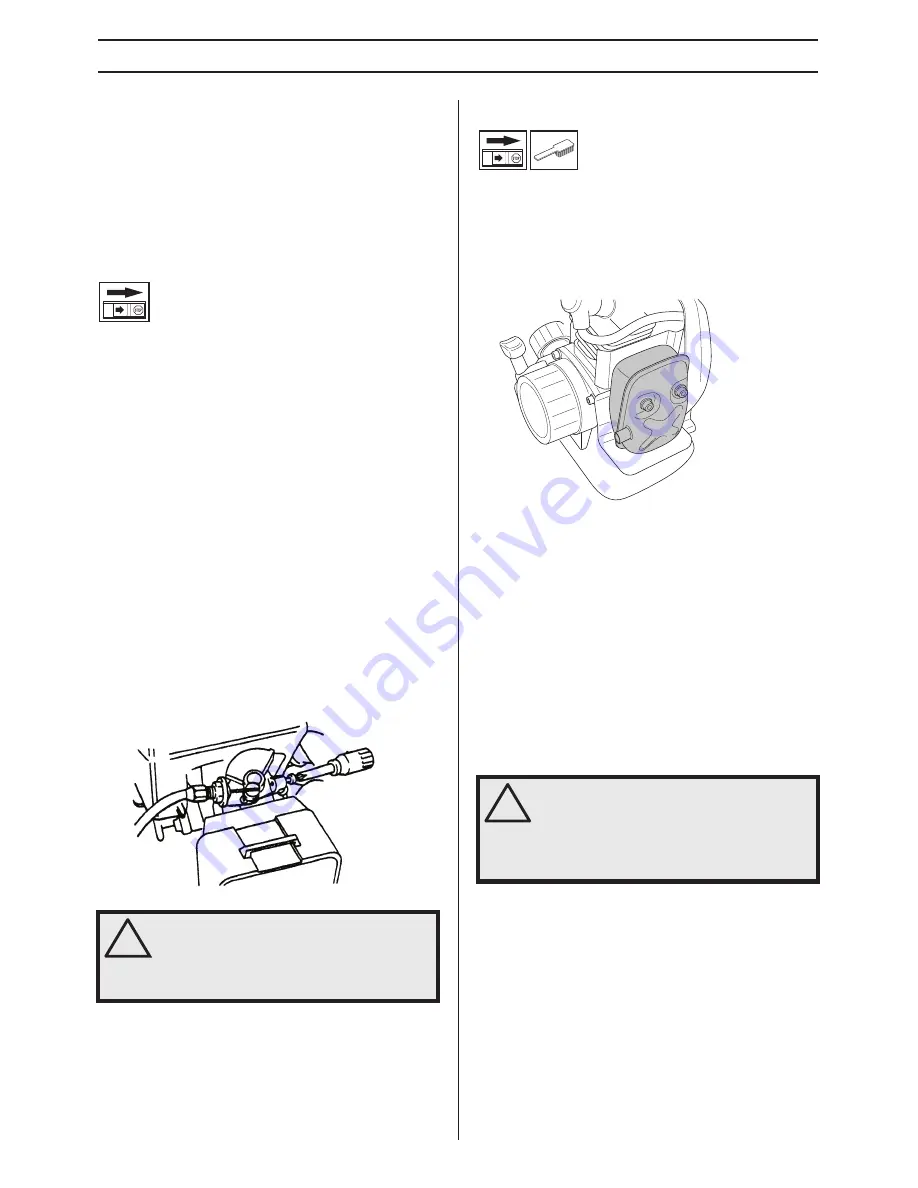
20 –
English
MAINTENANCE
Carburettor
Your Jonsered product has been designed and manufactured
to specifications that reduce harmful exhaust fumes. The
engine will be run in after it has used 8-10 tanks of fuel. To
ensure that the engine runs at peak performance and
produces as little harmful exhaust fumes as possible after the
running-in period, ask your dealer/service workshop (which
has a rev counter for this purpose) to adjust your carburettor.
Function
•
The carburettor governs the engine’s speed via the
throttle control. Air and fuel are mixed in the carburettor.
The air/fuel mixture is adjustable. Correct adjustment is
essential to get the best performance from the machine.
•
Adjusting the carburettor means that the engine is
adapted to local operating conditions, e.g. climate,
altitude, petrol and the type of 2-stroke oil.
Adjusting the idle speed
The T-screw regulates the throttle setting at idle speed. If the
T-screw is turned clockwise this gives a higher idle speed;
turning it anti-clockwise gives a lower idle speed.
Before any adjustments are made, make sure that the air filter
is clean and the air filter cover is fitted.
Adjust the idle speed using the idle adjustment screw T, if it is
necessary to readjust. First turn the idle adjustment screw T
clockwise until the cutting attachment starts to rotate. Then
turn the screw anticlockwise until the cutting attachment
stops. The idle speed is correctly adjusted when the engine
will run smoothly in every position. The idle speed should also
be well below the speed at which the cutting attachment starts
to rotate.
Muffler
CAUTION!
Some mufflers are fitted with a catalytic
converter. See chapter on Technical data to see whether your
machine is fitted with a catalytic converter.
The muffler is designed to reduce the noise level and to direct
the exhaust gases away from the operator. The exhaust
gases are hot and can contain sparks, which may cause fire
if directed against dry and combustible material.
Some mufflers are equipped with a special spark arrestor
mesh. If your machine has this type of muffler, you should
clean the mesh at least once a week. This is best done with a
wire brush.
On mufflers without a catalytic converter the mesh should be
cleaned weekly, or replaced if necessary. On mufflers fitted
with a catalytic converter the mesh should be checked, and if
necessary cleaned, monthly.
If the mesh is damaged it
should be replaced.
If the mesh is frequently blocked, this
can be a sign that the performance of the catalytic converter
is impaired. Contact your dealer to inspect the muffler. A
blocked mesh will cause the machine to overheat and result
in damage to the cylinder and piston. See also instructions
under the heading Maintenance.
CAUTION!
Never use a machine with a defective muffler.
!
WARNING! If the idle speed cannot be
adjusted so that the cutting attachment
stops, contact your dealer/service
workshop. Do not use the machine until it
has been correctly adjusted or repaired.
!
WARNING! Mufflers fitted with catalytic
converters get very hot during use and
remain so for some time after stopping. This
also applies at idle speed. Contact can result
in burns to the skin. Remember the risk of
fire!
Summary of Contents for GC2123
Page 26: ......
Page 27: ...1 Poly Trim 2 3 4 5 6 7 8 20mm 20mm B A 6 Nm X 10...
Page 28: ...Clic 1 2 3 5 6 7 10 11 8 5 m 28 4 8 4 2 m 14 2 4 2 7 mm 095 106 10 cm 4 6 15 cm S35...
Page 29: ...1 2 4 3 2 4 2 7 mm 095 106 4 25 m 14 4 25 m 14 B 6 15 cm A 6 15 cm S35 5...
Page 30: ...Tap n Go 35 Spin Clic 1 2 3 5 6 7 9 8 5 m 28 4 8 4 3 m 14 2 4 2 7 mm 095 106 10 cm 4 6 15 cm...
Page 31: ......
Page 32: ...z TkJ 6g 2010 02 23 z TkJ 6g 1152754 26 Original instructions...


